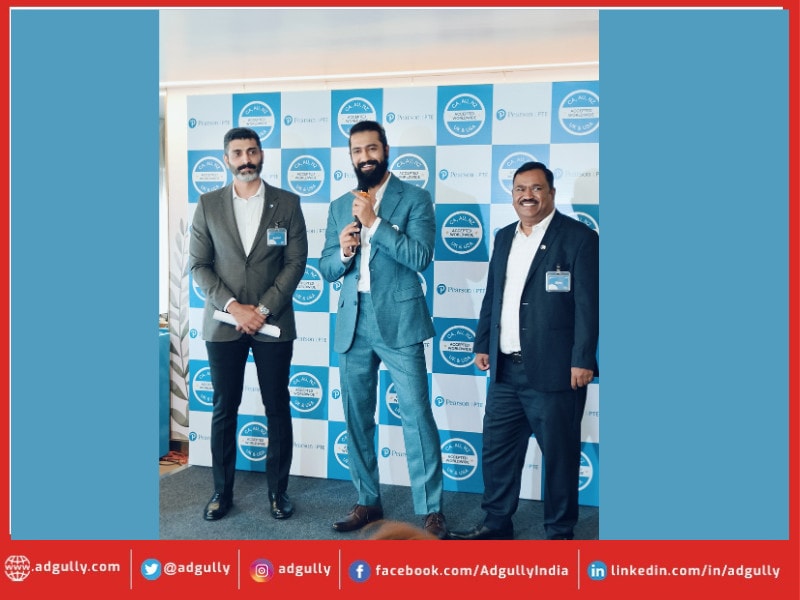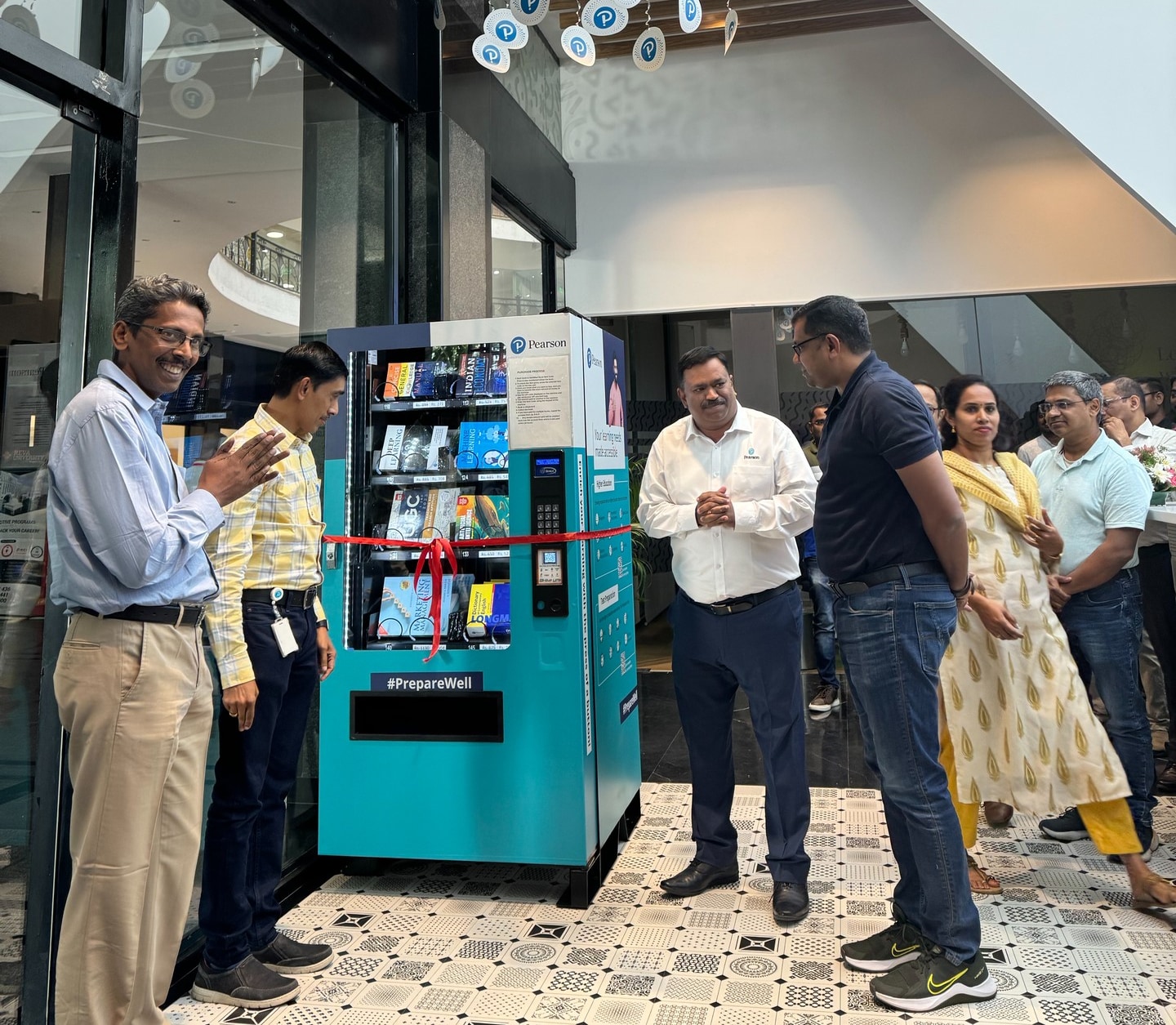PTE Academic and PTE Core are both English language proficiency tests but they serve different purposes and cater to distinct audiences.
Speaking English is more than just a talent in a world where communication is essential—it’s a gateway to opportunities that can change people’s lives. For those looking to go abroad for studies or work, higher English proficiency correlates strongly with higher salaries, better job opportunities, and a better social life.
Prabhul Ravindran, Director, English Language Learning, Pearson India in an email interview with Financial Express Online shares the importance of English language proficiency tests, especially the PTE Core, and how it differs from PTE Academic. Excerpts:
How does PTE Core aim to empower test takers in fulfilling their aspirations of living and working in Canada?
The approval from Immigration, Refugees and Citizenship Canada (IRCC) signifies that PTE Core meets the official standards for proving English language proficiency, thus providing test takers with a credible pathway toward their immigration goals.
Unlike traditional academic English proficiency tests, PTE Core is designed with a vocational and real-life focus. This means that the test assesses English language skills in contexts relevant to everyday life and work scenarios, which is particularly beneficial for individuals seeking to integrate into the Canadian workforce and society.
The accessibility and convenience of PTE Core further contribute to its ability to empower test takers. With the option to book the test online up to 24 hours in advance and year-round availability of test centre slots worldwide, PTE Core offers a flexible and efficient testing experience. Additionally, the rapid turnaround time for receiving test results, typically within two days, enables individuals to progress swiftly with their immigration plans.
What are the differences between PTE Academic and PTE Core?
PTE Academic and PTE Core are both English language proficiency tests provided by Pearson, yet they serve different purposes and cater to distinct audiences. Both tests assess the four key English language skills speaking, listening, reading, and writing. However, the content and structure of the tests differ.
PTE Academic primarily targets academic test takers, such as students applying to universities or colleges, focusing on evaluating language skills within academic contexts.
In contrast, PTE Core is specifically designed for vocational test takers, emphasizing real-life, non-academic scenarios relevant to professions and daily interactions. Additionally, the scoring criteria and test format may vary between the two tests to accommodate their respective target audiences.
Further, PTE Core is for Canadian economic visa purposes only at present. People wanting to study in Canada for both SDS and non-Student Direct Stream (SDS) visas or worldwide and live or work in the UK, Australia or New Zealand need to take PTE Academic as usual.
This difference in task complexity and context reflects the distinct needs and expectations of their respective target audiences. As a result, test takers should consider their specific objectives and linguistic competencies when choosing between the two tests.
How does Pearson’s PTE distinguish itself from competitors like IELTS, TOEFL etc and does IELTS still hold a monopolistic presence in the English proficiency testing industry in India?
PTE widespread acceptance by institutions and governments globally is a key factor in its prominence. PTE Academic is accepted by over 3,300 universities and colleges worldwide, including prestigious institutions like Harvard Business School, INSEAD, and Yale. This broad recognition extends to countries such as Canada, Australia, New Zealand, the USA, the UK, and Ireland, underlining trust in PTE’s assessments.
Significantly, PTE Academic’s recognition by Immigration, Refugees and Citizenship Canada (IRCC) for Student Direct Stream (SDS) applications is noteworthy, affirming its quality and credibility for Canadian immigration. Governments in Australia, the UK, and New Zealand also accept PTE scores for visas and study, reflecting trust in its proficiency evaluations.
Last year IRCC approved four new English language assessments, which include PTE Academic, and with recent recognition of PTE Core as well, individuals planning to study, work or immigrate abroad now have credible alternatives to prove their English proficiency.
PTE’s features, include fast results within 48 hours and AI-powered assessment eliminating human bias, making it one of the fastest, fairest, and most accurate tests available.
Overall, Pearson’s PTE offers test takers a reliable and efficient way to demonstrate their English language proficiency, making it a preferred choice for individuals aspiring to study, work, or immigrate abroad.
In what ways is Pearson supporting the global education journey of Indian students?
We play a vital role in supporting the global education journey by offering comprehensive learning and assessment solutions. Our focus is to empower students with proficiency in English, a crucial skill in today’s competitive global landscape.
In partnership with various organizations, we offer value propositions to support students’ journeys. This includes initiatives like our collaboration with University Living, to provide assistance with accommodation, financial services, and logistics for study-abroad aspirants in India, enabling them to focus on their preparation for PTE, without the distraction and anxiety about accommodation and financial support.
From practice tests, and sample question banks to online tutorials, students get to access a wide range of tools that cater to their diverse learning styles to prepare for the PTE test. These resources help boost a student’s confidence while also improving their English language proficiency. To help students overcome doubts, we offer a step-by-step guide enlisting the process and providing a broader picture of the activities to be performed during the PTE Academic exam.
Furthermore, with an extensive network of PTE centres spanning the globe, we ensure easy access to our English proficiency tests, facilitating students in achieving their academic and professional objectives abroad.
What developments do you anticipate in the future of English language proficiency testing or assessment?
One prominent trend is the continued integration of AI and ML algorithms to enhance the assessment process. These technologies, when combined with human expertise, will refine scoring mechanisms, ensuring even greater precision and objectivity in evaluating candidates’ language skills.
Future assessments may incorporate more interactive tasks and simulations that mirror authentic communication contexts, such as virtual role-plays or collaborative problem-solving activities, designed with a real-life, non-academic focus. This shift towards assessing functional language proficiency aligns with the evolving needs of academia, employment, and global communication, where effective language use in practical situations holds paramount importance.
Other potential future trends could involve the integration of AI-driven platforms to offer personalized study plans, adaptive practice exercises, and targeted feedback based on the individual needs identified through a Skills Profile. This would enhance the efficiency and effectiveness of test preparation, ultimately leading to better outcomes for test-takers.
Are there sufficient PTE test centers equipped with state-of-the-art facilities to accommodate the current demand? What does the demand for studying, working, or immigrating to India look like?
With over 477 test centres in 119 countries, including more than 50 centres in India alone, we have taken proactive measures to ensure accessibility for both PTE Academic and PTE Core test takers across various regions.
Demonstrating our commitment to providing modern and secure testing environments, we have established a 90-seater state-of-the-art test centre in Chandigarh. This spacious facility reflects our ongoing efforts to cater to the growing demand from students and professionals seeking international opportunities.
In addition to our Pearson Professional Centres, we are actively engaged in strategic partnerships to further expand our network and provide greater accessibility. This commitment is exemplified by our collaboration with Pearson VUE and HCLTech, which has resulted in the opening of several strategically chosen locations addressing the specific needs and ensuring convenient testing options for local candidates.
Over the past five years, we have witnessed a significant increase in test registrations across India, with states like Punjab, Gujarat, Andhra Pradesh, Karnataka, and Maharashtra leading the way. This growing demand underscores the strong interest among Indian students and professionals in pursuing opportunities abroad.
About Pearson
At Pearson, our purpose is simple: to add life to a lifetime of learning. We believe that every learning opportunity is a chance for a personal breakthrough. That’s why our c.20,000 Pearson employees are committed to creating vibrant and enriching learning experiences designed for real-life impact. We are the world’s leading learning company, serving customers in nearly 200 countries with digital content, assessments, qualifications, and data. For us, learning isn’t just what we do. It’s who we are.
Visit us at: www.pearsonplc.com
For more information, please contact: Bhavya Suri, PR & Corporate Affairs, Pearson India & MENA- bhavya.suri@pearson.com
Read More / Financial Express
read more






